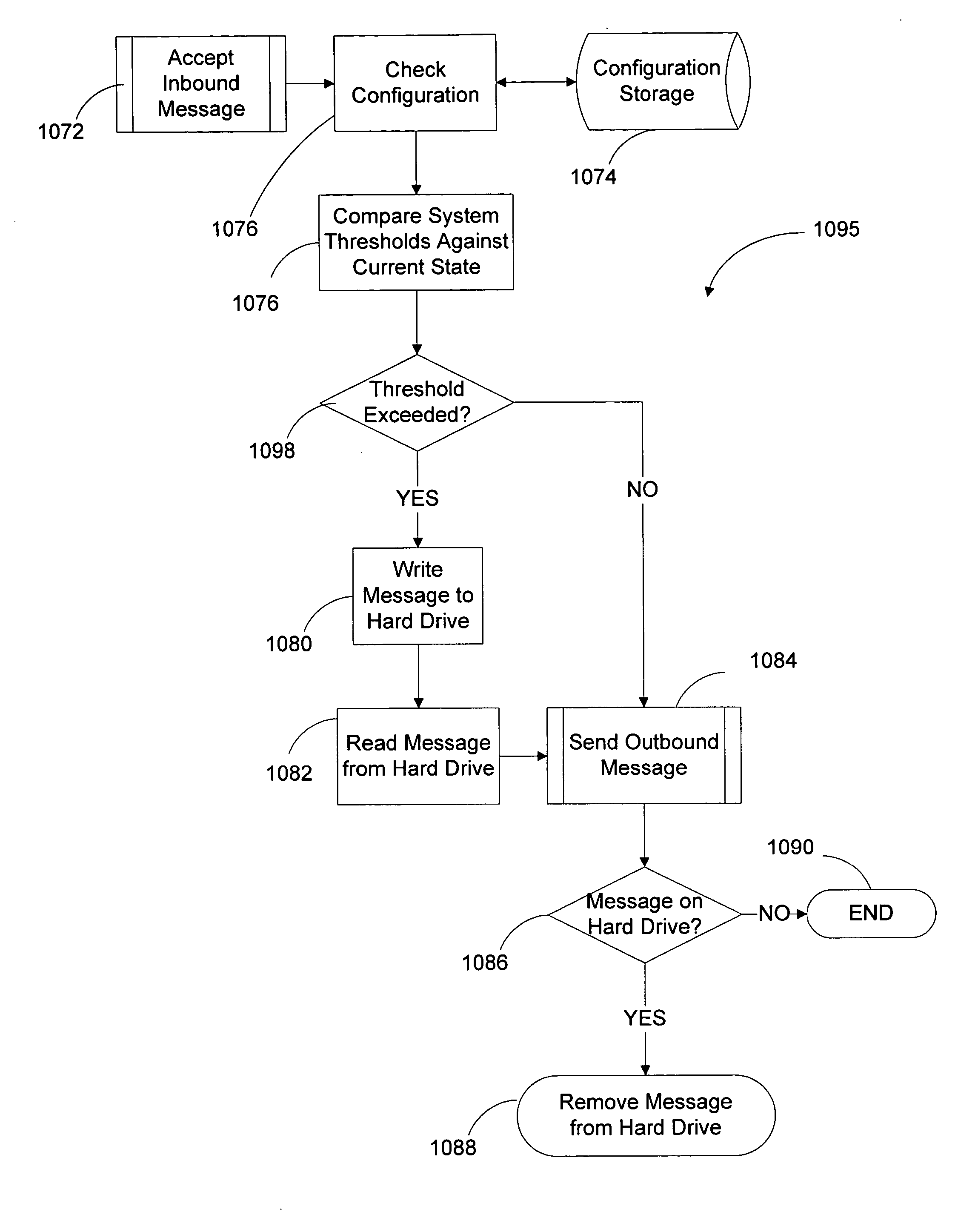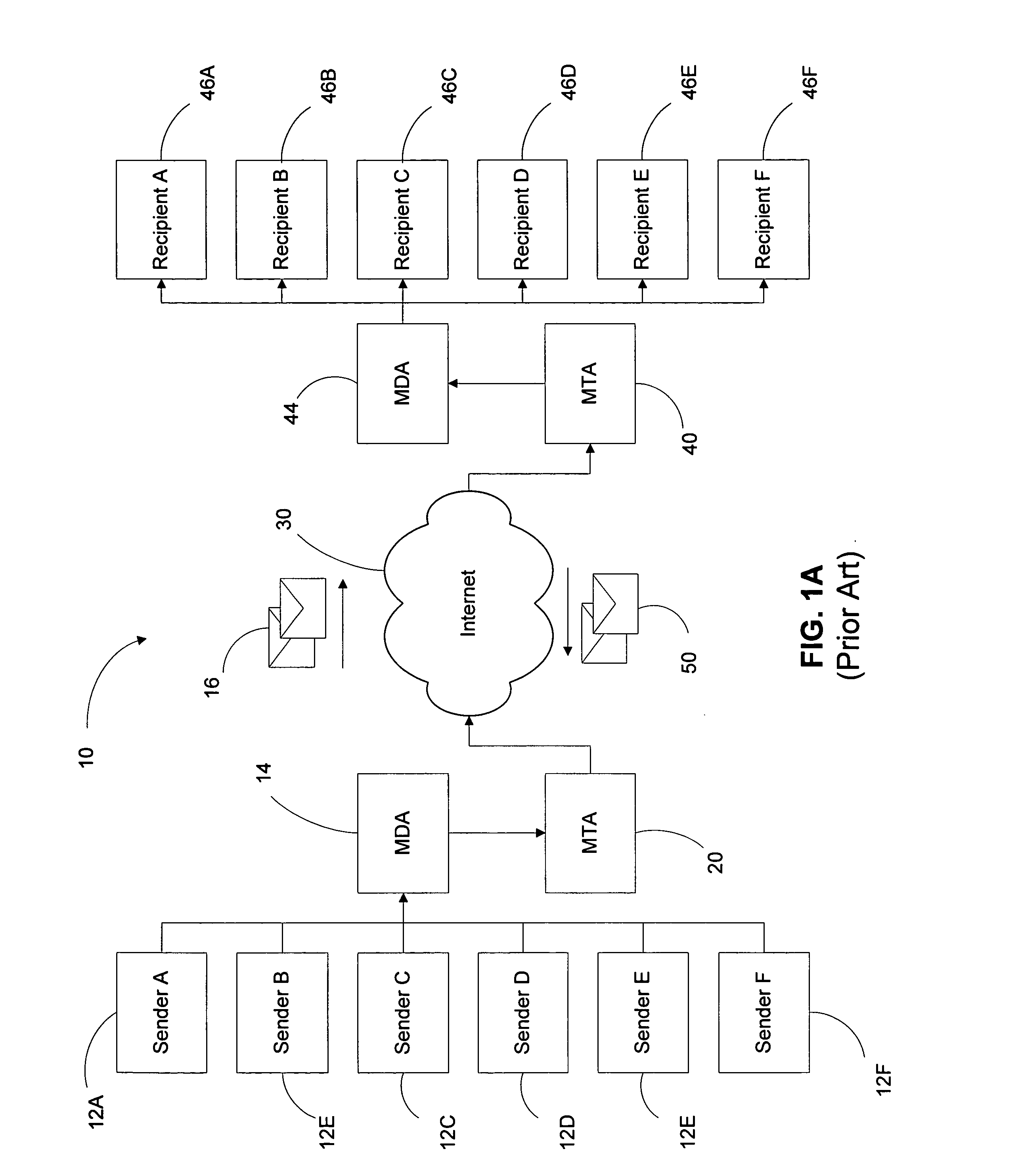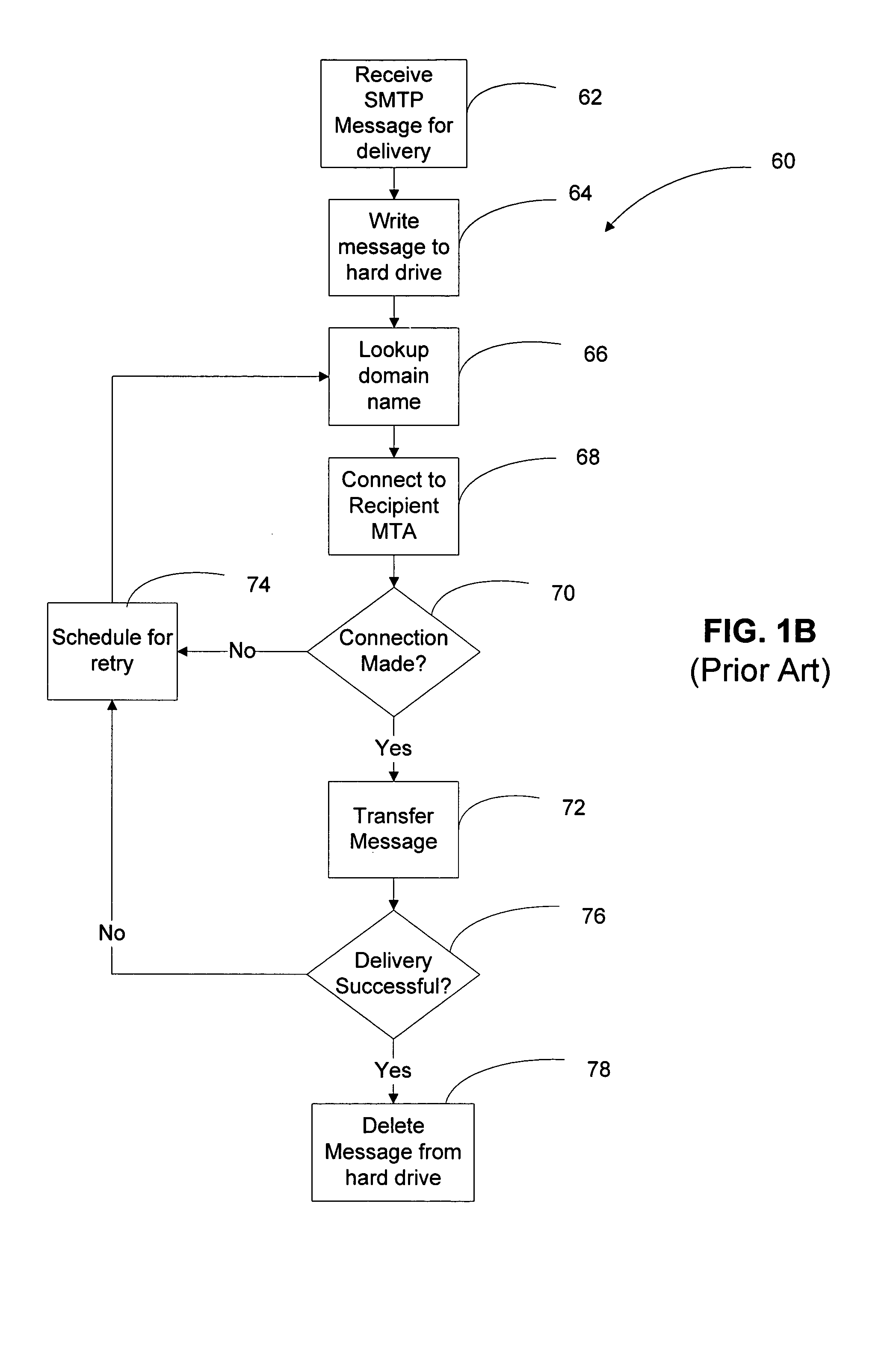High performance electronic message delivery engine
a high-performance, electronic message technology, applied in the direction of transmission, electrical equipment, instruments, etc., can solve the problems of consuming the available processing capacity of the sender, unable to meet the challenges of scalable electronic message programs, and requiring substantial hardware and human capital, so as to improve speed and efficiency, limit delivery speed, and optimize delivery performance
- Summary
- Abstract
- Description
- Claims
- Application Information
AI Technical Summary
Benefits of technology
Problems solved by technology
Method used
Image
Examples
Embodiment Construction
The following description is presented to enable one of ordinary skill in the art to make and use the invention and is provided in the context of a patent application and its requirements. Various modifications to the described embodiments will be readily apparent to those skilled in the art and the generic principles herein may be applied to other embodiments. Thus, the present invention is not intended to be limited to the embodiment shown but is to be accorded the widest scope consistent with the principles and features described herein.
Problems in the Current State of the Art
Advances in the art have yielded improvements in delivery speed and hardware efficiency in conjunction with advances in operating systems. There are, however, problems in a number of the key characteristics of e-mail MTAs that limit advances in performance, flexibility, security and feature enhancements.
Problems with the SMTP Feed
E-mail was initially created to transmit electronic messages from one ...
PUM
 Login to View More
Login to View More Abstract
Description
Claims
Application Information
 Login to View More
Login to View More - R&D
- Intellectual Property
- Life Sciences
- Materials
- Tech Scout
- Unparalleled Data Quality
- Higher Quality Content
- 60% Fewer Hallucinations
Browse by: Latest US Patents, China's latest patents, Technical Efficacy Thesaurus, Application Domain, Technology Topic, Popular Technical Reports.
© 2025 PatSnap. All rights reserved.Legal|Privacy policy|Modern Slavery Act Transparency Statement|Sitemap|About US| Contact US: help@patsnap.com



